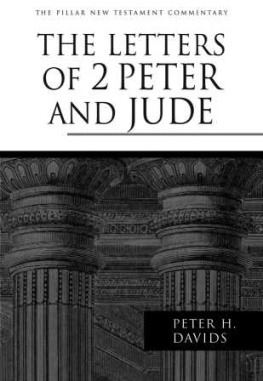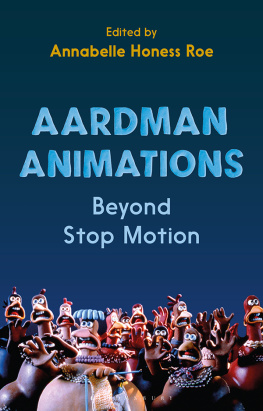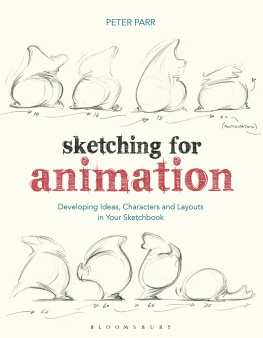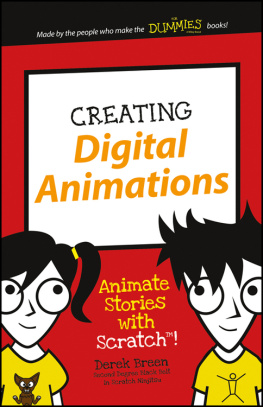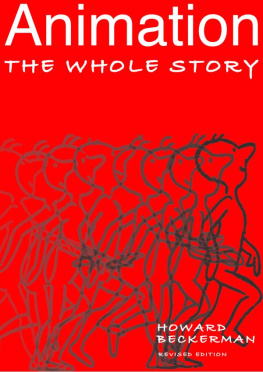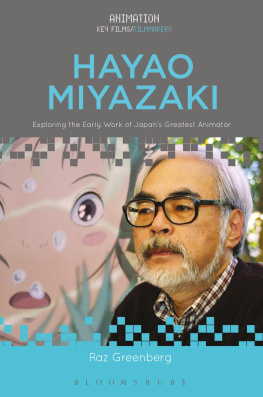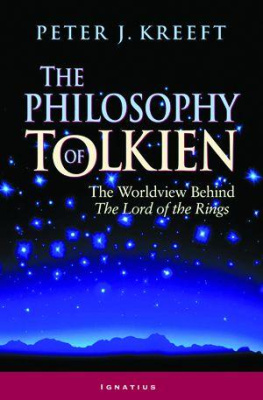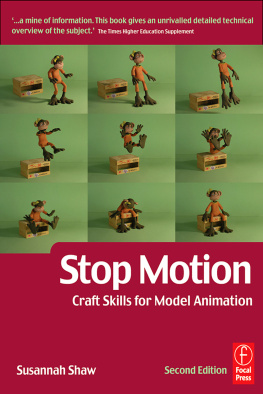The Aardman story isnt just about two blokes
called Dave and Pete. We dedicate it to all
the talented and dedicated people who have
worked at Aardman over the past four decades
and have made this adventure possible.
F OREWORD
B Y M ATT G ROENING
I was hooked on Aardmans animations when I saw The Wrong Trousers for the first time in 1994. Sure, Wallace and Gromit are a couple of the sweetest animated characters ever created. Yes, the film as a whole is a brilliant display of ingenious stop-motion clay animation. The turbo trousers, museum heist and climactic toy-train chase are all virtuoso examples of the art of suspense, timing and jokes. But what got me, what made me crazy with delight, was that penguin! That sinister, silent, rubber-glove-on-his-head penguin. I have since learned the penguins name is Feathers McGraw (another brilliant touch), but man! When the penguin first moves in as a boarder with Wallace and Gromit and suddenly jerks his head towards the slow-thinking but suspicious Gromit, it made me laugh out loud with the joy that comes from the unexpected but wholly delightful surprise. And the Hitchcockian scene when Gromit spies on the nefarious penguin from inside a Meatabix dog-food box sealed the deal for me: The Wrong Trousers is one of the greatest animated movies of all time.
So many things make Aardman animations splendid: the beautifully goofy character designs, the punchy stories, the unforeseen sight gags, the subtle but hilarious dialogue, the ingenious music and sound effects, and the perfectly imperfect charm of hand-sculptured Plasticine art (including the occasional thumbprint). I was able to visit Nick Park, Peter Lord, Steve Box, David Sproxton, David Alexander Riddett and Richard Starzak at the Aardman studio in 2002 and it was like getting a peek inside Santas very busy toy workshop. (Apologies to the unnamed animators sick of being compared to elves, but youre all so cute and industrious!)
No doubt you agree that Aardmans animations are hilarious in their absurd believability (or believable absurdity). The short films, including all the Wallace and Gromit miniature masterpieces, the features (my favourites are Chicken Run, The Pirates! In an Adventure with Scientists! and Wallace and Gromit: The Curse of the Were-Rabbit ) and all the rest of Aardmans prolific, decades-long output are unmatched in consistent brilliance. I think this is due to the shared vision of congenial collaboration, in which you can see clay characters actually think something that is very difficult in animation. Aardman creatures have humanity, heart and soul, and I want to visit and revisit them often. They are so real I dream theyre having other adventures when Im not watching.
I have a pack of very young kids these days, and theyre not quite old and immature enough to view my own subversive animated shows. Then again, Im not ready to watch the slick, peppy, limited animation that is aimed at their tender brains. So bless Aardman and the glorious Shaun the Sheep TV series, a show I enjoy as much as my kids do (even if they tell me I laugh too loud). As they get older, I will take great pleasure in showing them the more sophisticated Aardman productions. I cant wait until theyre ready for Feathers McGraw.
I NTRODUCTION
B Y N ICK P ARK
I first became aware of Aardman in my teenage years. Obsessed with animation and making my own 8 mm films at home, I would draw my inspiration largely from the TV. There was an innovative show on the BBC in the early 1970s aimed at hearing-impaired children it was called Vision On . It was a visually creative show packed with surreal and funny animation in various techniques. These animated spots grabbed my attention, particularly the ones done with clay animation. I was even more excited when Morph came on the scene as the programme evolved into Take Hart . I was eager to know who was behind all this animated magic, but back then there was no internet, and so I was thrilled when the BBCs Blue Peter went behind the scenes in Bristol to meet Morph and his friend Chas, and the guys responsible for giving them life I was ecstatic. Thats the first time I met Peter Lord and David Sproxton. And, strangely enough, they did uncannily resemble Morph and Chas, at least in mannerisms. Little did I know then that I would join them a few years later and they would become such lifelong mentors and friends. Pete and Dave, that is, not Morph and Chas.
A year or two later, while doing my communication arts degree at Sheffield Polytechnic, my dad phoned me: Youve got to see this thing on TV called Animated Conversations , its right up your street. Renowned animators had contributed to this remarkable BBC series, but my dad perceptively described one short, Down and Out , and how the clay characters were so expressive, subtle and well observed. It was so human; funny but sad. There was great empathy and pathos coming through the Plasticine. Aardman were now not just creating loveable childrens characters, but, as filmmakers, were able to reach adult audiences, too.
I longed to meet these guys, and once, as a student, I ventured to chat to Pete at the London Film Festival, but I dont think he recalls the encounter. I was just another student fascinated with Aardman. I wouldve loved to have asked him and Dave to come and speak at the National Film and Television School, where I was studying animation, but somehow reverence and shyness got the better of me. Then, a few months later, my opportunity came. At the NFTS we had a fund to invite lecturers of our choice to visit, and I discovered that a fellow student knew Pete and Dave from way back, and she described how nice and approachable they were. This gave me the confidence to write and ask them if they would come and give a talk and, to my surprise, they immediately said yes!
Pete and Daves visit was a highlight of the student year, and admiration from the students abounded. There werent many stop-motion animators around back then, never mind clay animators, so Pete and Dave felt to me like kindred spirits and, as a film student, I liked the way they were thinking as filmmakers, too. On their visit, they also happened to see a little project I was beavering away on called A Grand Day Out , and, at that time, Id only shot some tests and early footage of Wallace and Gromit. I was more than chuffed when they showed eagerness to see my work, and I was beside myself when they called a month later and asked me come and work for them in Bristol.
Pete and Dave were expanding Aardman and taking on new projects and commissions, and they needed more animators. In the mid-1980s, Britain was leading the way in TV commercials; ad agencies were adventurous, looking for new graphic styles and techniques, and Aardman were gaining a profile as a very unique company to go to. It wasnt a difficult decision for me when asked to work for Aardman, the one place in the animation world I admired the most. They were inspiring and creatively interesting and I was thrilled to become a part of that journey.
It seems a lifetime ago now since I joined Aardman, and a lot of water (and Plasticine) has gone under the bridge. Im personally grateful for all the opportunities that I have been given, and for the way Pete and Dave recognised talent in me early on and gave endless support, guidance and opportunities not just to myself, but to many other directors and creatives, nurturing them and giving them chances to develop. This continues to be the Aardman way today, and there are many talented men and women in all the various departments who contribute to this environment. Many people see a name and think its all down to an individuals talent or genius, but no one knows the weeks and months and years of development; the round after round of feedback, comment and rigorous criticism (and thankfully encouragement) that go into each production and Pete and Dave, along with our development teams, never pull any punches. Aardman has become this unique environment, a creative pressure cooker for talent and ideas, and Im very grateful for it, as are countless others, even if, on occasions, there is need to let off steam.


